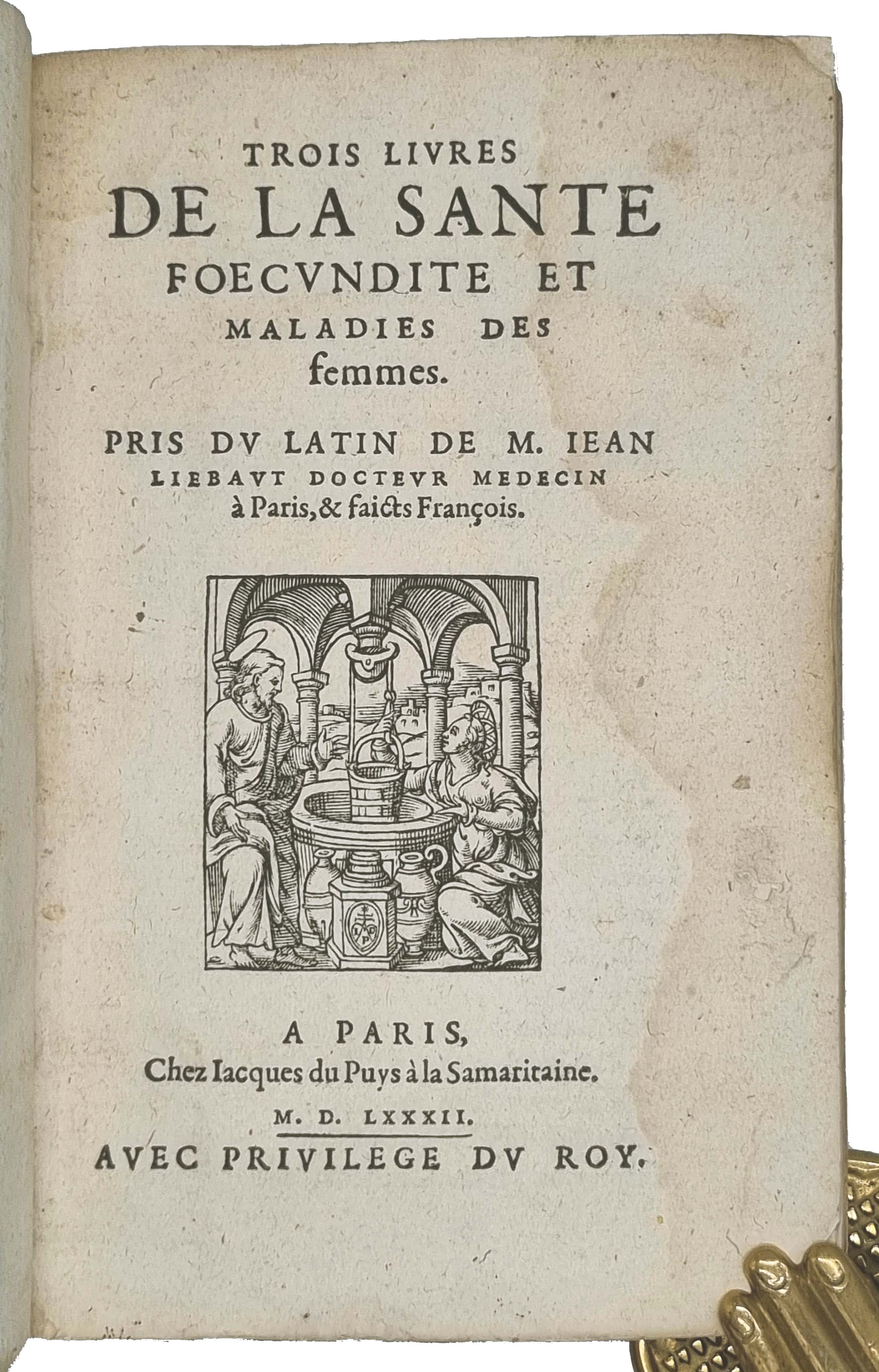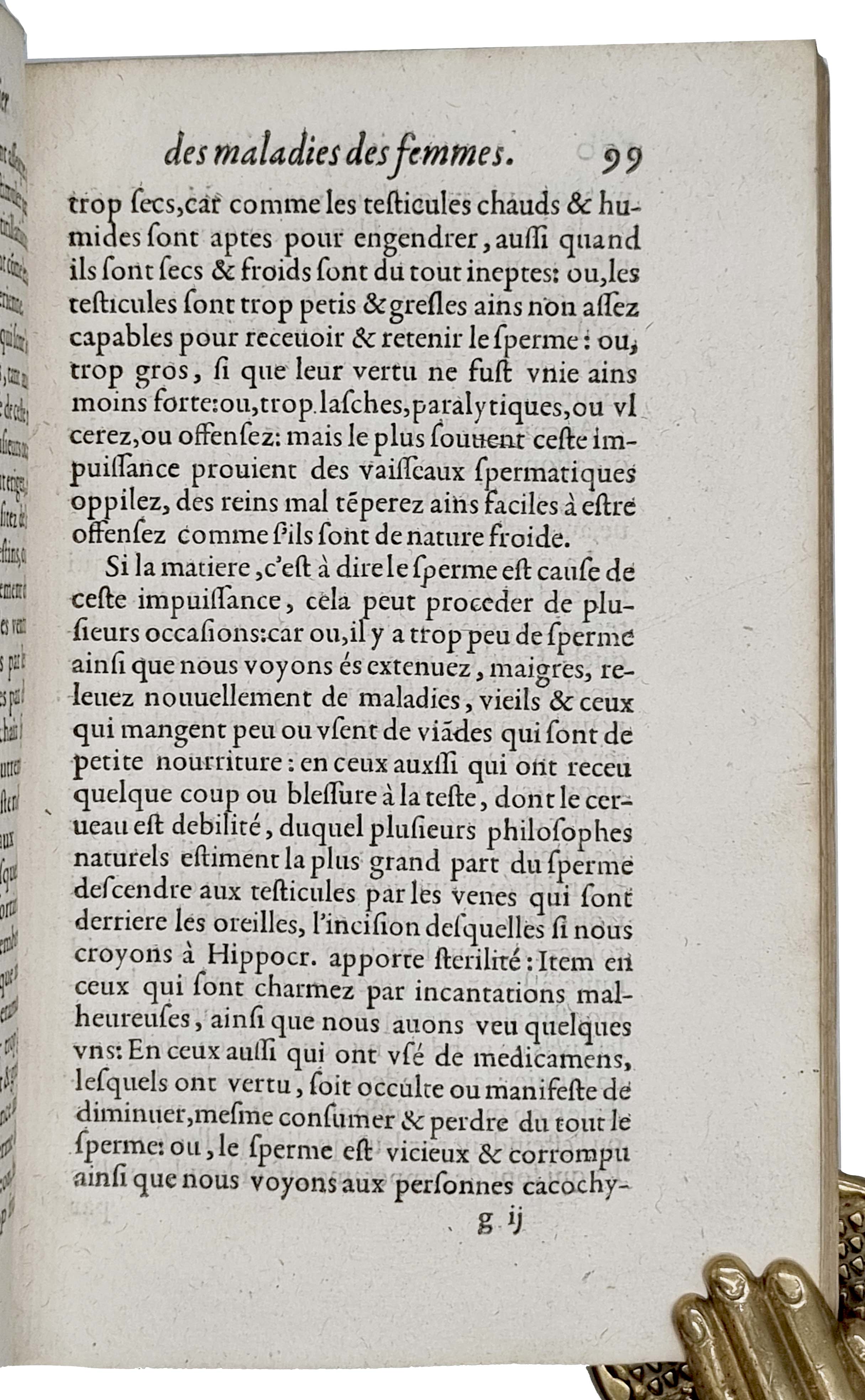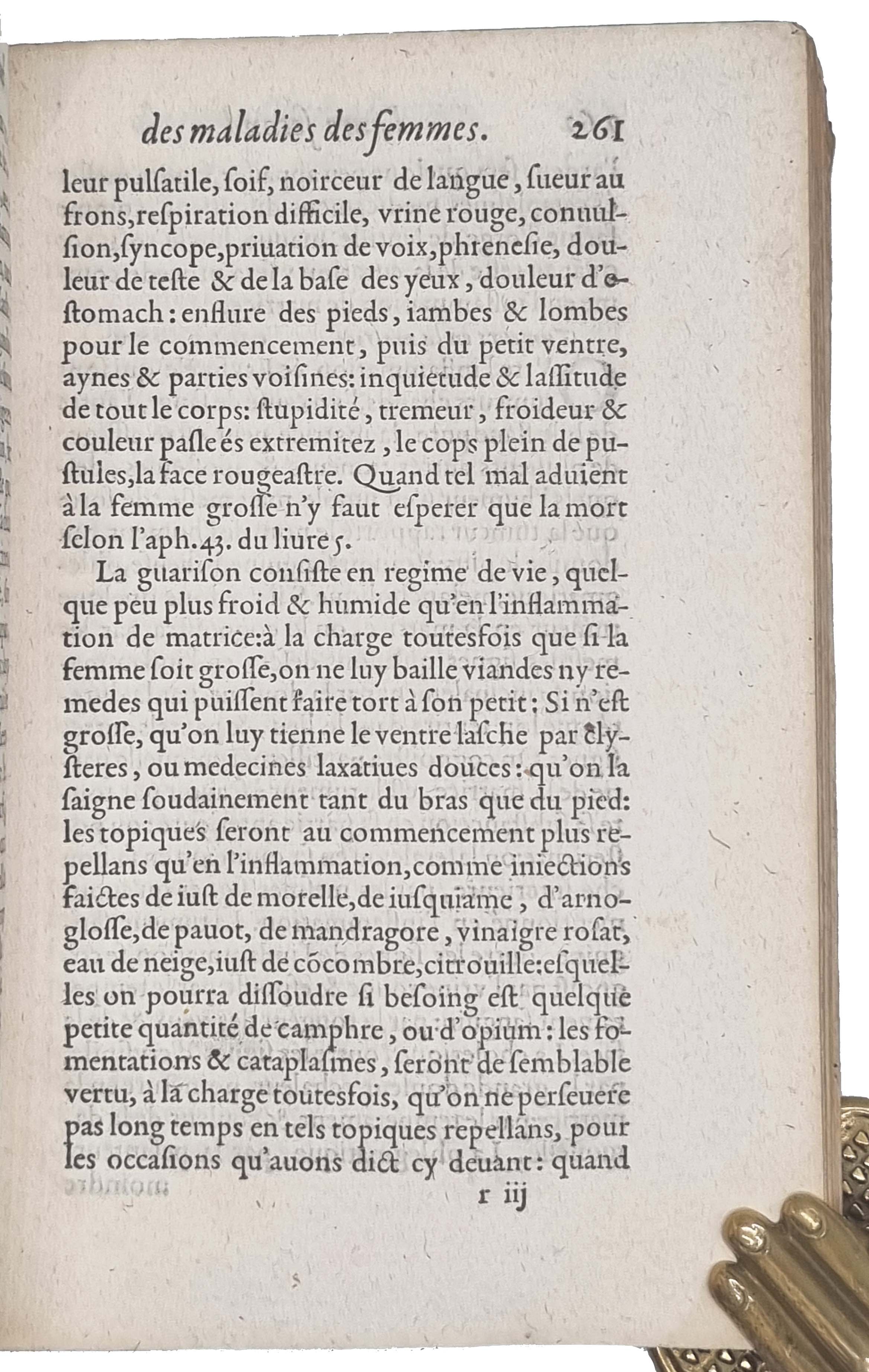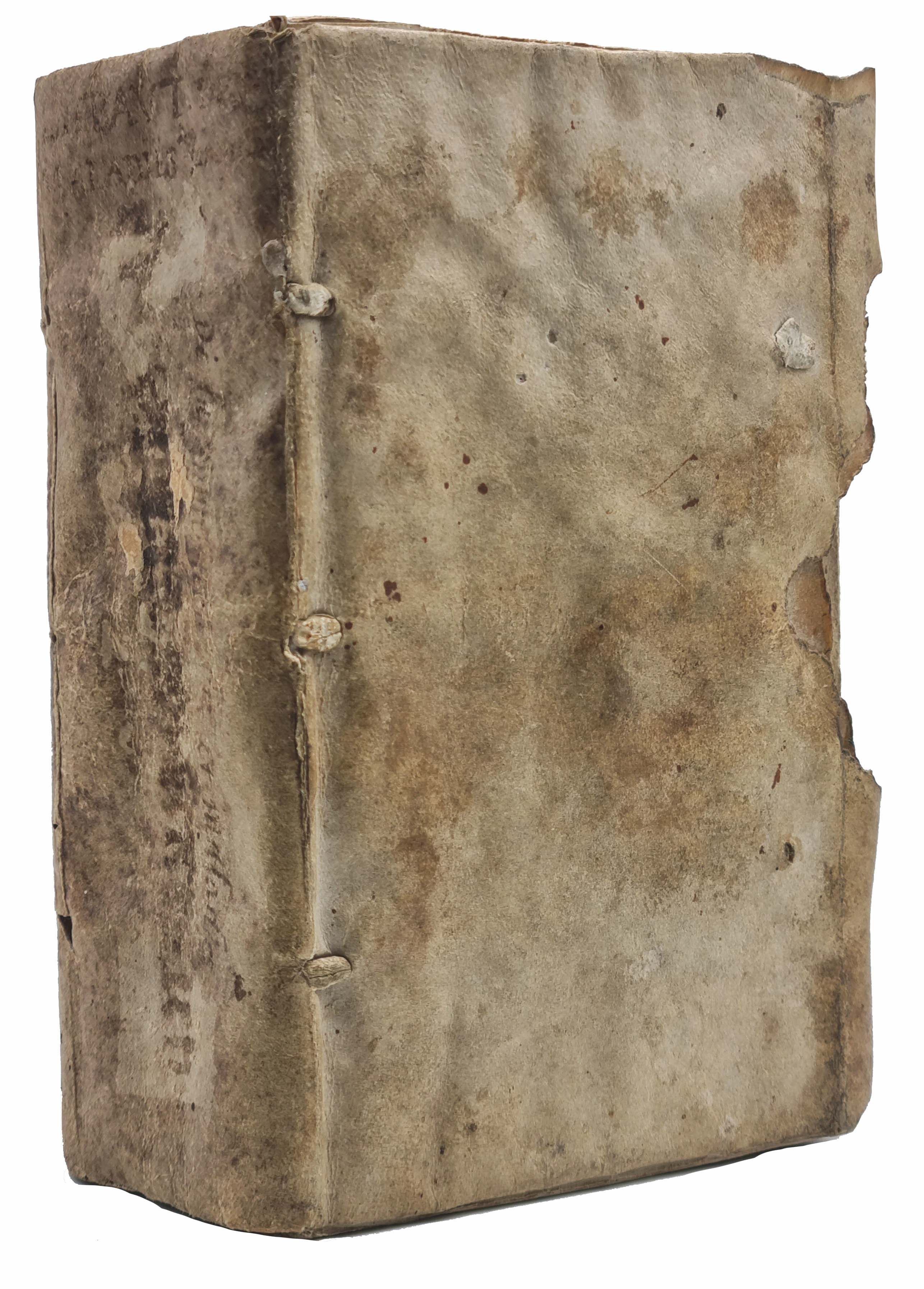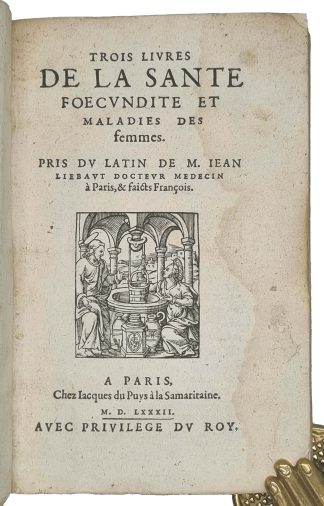LIEBAULT, Jean
FIRST FRENCH EDITION OF THIS GYNAECOLOGICAL HANDBOOK
Trois livres de la santé, foecundité et maladies des femmes
Paris, Jacques du Puys, 1582£3,750.00
First edition thus 8vo. pp. (xvi) 923 (i) (xvi). Roman letter, some Italic. Woodcut printer’s device to t-p, depicting Christ with the Samaritan woman at the well, fine woodcut initials and head-pieces. One or two later ms. marginal notes. Very light waterstaining, mostly marginal, to first few leaves and index. Small wormhole to t-p, not affecting text. A very good, clean copy in contemp. vellum, a little soiled, fore-edges chewed, lacking ties, in modern box.
First French edition (translated from the Latin De sanitate, faecunditatae et morbis mulierum of the same year) of this gynaecological handbook by Jean Liébault (c.1535-1596), doctor and agronomist. It was one of the very first vernacular works, designed for the laywoman, about the female physical condition. Liébault was born in Dijon but moved to Paris to study medicine, where he became a successful doctor, highly esteemed by both colleagues and patients. He married Nicole Estienne, daughter of the great Parisian printer Charles Estienne (1504-1564), who had himself studied medicine under Jacob Sylvius alongside the young Vesalius. Liébault completed and translated his father-in-law’s Praedium rusticum into French as La maison rustique (1564); a translation of Gesner’s Quatres livres des secrets de médecine followed in 1573. Trois livres de la santé was the first of two works on feminine health and beauty he published in 1582: De l’ornement & beautez des Femmes is advertised in the present work. Madame Liébault, a noted femme des lettres, was herself the author of Misères de la femme mariée, mises en forme de stances, and the manuscript Apologie pour les femmes, contre ceux qui en médisent. She predeceased her husband by some years; the contemporary diarist Pierre de L’Estoile records that Liébault died suddenly, after sitting down to rest on a stone in the rue Gervais-Laurent.
Liébault’s introduction to the present work laments the infinite number of maladies which accompany any person through his or her life, ‘mais plus griefues en affliction tormentent le corps de la femme comme celuy de l’homme’. Woman, he takes care to emphasise, ‘n’est animant mutile ny imparfaict, mais foible & maladif’. His work describes and suggests causes and remedies – often more than one – for a range of gynaecological complaints, in chronological order from childhood to motherhood; Liébault does not advise on the maladies of women beyond child-bearing age. Young girls, he notes, may be subject to nervous illnesses, nausea, headache and neuralgia. He deals with menstruation, venereal disease and various renal and gastro-intestinal problems, before proceeding to the subject of conception and childbirth, which occupies the greatest portion of the book. Obesity, male and female, is listed among the causes of infertility; common birth defects are described, along with less common ones such as hermaphroditism. Alongside a discussion of family resemblance in young children (with a gentle reminder that even animals and plants have an urge to reproduce in their own image), Liébault also addresses the question of when a child receives its soul. Of particular interest is the chapter devoted to the performance of caesarean section, which, given the high mortality rate, is advised only as a last resort: the first modern caesarean section which the mother is known to have survived had been performed as recently as 1500. Liébault concludes with advice on the treatment of the newborn and the new mother. The work contains a detailed table of contents and index, and a brief list of errata.
BM STC Fr. 266; Brunet III, 1074; Wellcome I, 3800; Durling 2959 (attributed to Giovanni Marinelli); not in Adams, Heirs of Hippocrates, Osler, Garrison and Morton or Erdman.In stock


